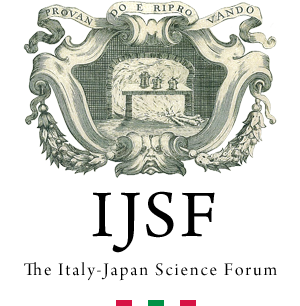
The image adopted as emblem of the IJSF was first printed on the "Saggi di naturali esperienze", a publication of the Italian Accademia del Cimento (1657-1667), and then used on the title page of the Nuovo Cimento, the journal of the Italian Physical Society (at the end of the 1990's some sections of the Nuovo Cimento have merged into the European Physical Journal and Europhysics Letters, some other sections are still published under the original name). The emblem portrays three crucibles under the motto: "PROVANDO E RIPROVANDO". These words were taken from the third line of the third chapter of the third book ("Paradise") of the Divine Comedy by Dante Alighieri. They may have at least two interpretations. They may testing and testing again (your experimental as well demonstrating and or "approving and refuting". s interpretation was the latter, but the ancient Italian physicists probably wanted to refer to the former and so to the experimental method. In fact, the Accademia del Cimento (often translated as Academy of Experiment) was the first scientific society to adopt the Galilean experimental method in Europe. It was founded in Florence in 1657 by students of Galileo, Giovanni Alfonso Borelli and Vincenzo Viviani. It was funded by Prince Leopoldo and Grand Duke Ferdinando II de' Medici. The tenets of the society included: Experimentation (about everything; this was unusual in this early period of science) Avoidance of speculation (this was also unusual) Creation of laboratory instruments Standards of measurement Its publication, whose full title is "Saggi di naturali esperienze fatte nell'Academia del Cimento sotto la protezione del Serenissimo Principe Leopoldo di Toscana e descritte dal segretario di essa Accademia" (in English: "Essays about natural-science experiments performed by the Academy of Experiment under the patronage of His Serene Highness Prince Leopoldo, written by the secretary of said Academy"), was first published in 1666 and became the standard laboratory manual in the 18th century. It began the process of standardizing processes, instruments, and measurements throughout Europe. The term "cimento" also has an interesting etymology. It was originally used in the 14th century in the context of alchemy, where it referred to a mixture of substances used to test and purify precious metals. It then came to mean "experiment", "proof", "verification". The word is still used in modern Italian language, especially in the form of the derived verb "cimentarsi", which has several meanings, including "to venture, to engage in a difficult enterprise, to put oneself to the test, to test one's ability, to measure oneself against".
Aims and activities
—
The Italy-Japan Scientific Forum (IJSF) aims at supporting scientific and cultural exchanges between Japan and Italy, in cooperation with other associations with similar intents. The activities of the IJSF include promoting exchanges of researchers, information, and knowledge between Japan and Italy, by organizing directly or supporting indirectly seminars, workshops, and conferences, by supporting the travel expenses of individual researchers, and through other activities that the General Assembly and the Committee will find appropriate. The JIFS is supported by the Embassy of Italy in Japan.


Management
—
Honorary President: Shuji Fukui (Nagoya University)
President: Takashi Nakano (Osaka University)
Vice-president: Luca Baiotti (Osaka University)
Secretary: